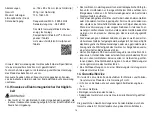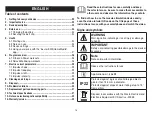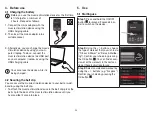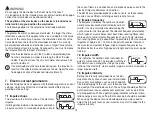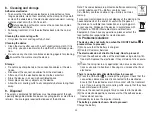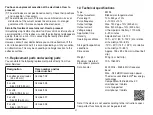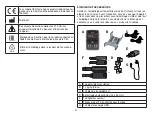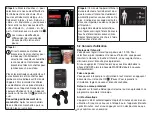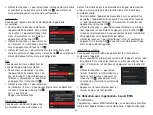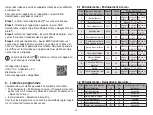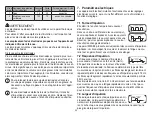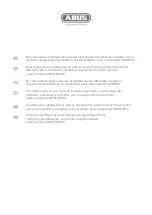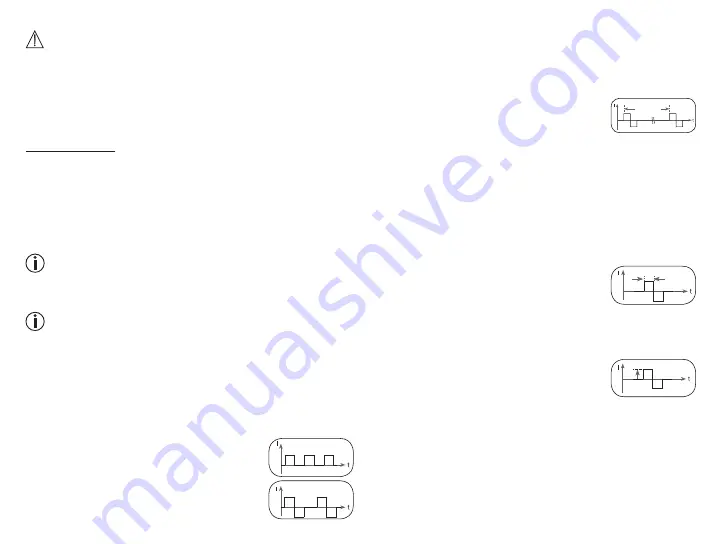
29
WARNING!
Do not apply the electrodes to the front wall of the chest.
It is fundamental to the intended success of electrostimulation appli-
cations that electrodes are positioned sensibly.
The position of the electrodes on the device is intended as an
initial aid to help you position the electrodes.
The following applies to the selection of electrode positions:
Electrode distance
The greater the distance between electrodes, the larger the stimu-
lated tissue volume. This applies to the area and depth of the tissue
volume. At the same time, however, the stimulation intensity of the
tissue decreases the further the electrodes are apart. As a result,
greater distances between electrodes mean a larger tissue volume
is stimulated, but less intensively. Consequently, you must increase
the impulse intensity to boost stimulation.
Use the electrodes on skin that is clean and preferably free
from hair and grease in order to prolong the life of the elec-
trodes. If required, clean the skin with water and remove hair
prior to treatment.
If an electrode should come loose during use, the impulse in-
tensity of the affected channel reduces to zero. Apply the elec-
trode again and reset the desired impulse intensity.
7. Electric current parameters
Electrostimulation devices operate with the following electric current
settings, which may affect the stimulation results differently, de-
pending on the setting:
7.1 Impulse shape
This describes the time function of the electrical
impulse.
It distinguishes between monophasic and bipha-
sic pulse currents. In monophasic pulse currents,
the current flows in one direction and in biphasic pulse currents the
electrical impulse alternates its direction.
The EM 95 only provides biphasic pulse currents, as these relieve
muscles, cause little muscle fatigue and are safe for use.
7.2 Impulse frequency
The frequency indicates the number of individ-
ual impulses per second and is displayed in Hz
(Hertz). It can be calculated by determining the
cyclic value for the time period. The relevant frequency determines
which types of muscle fibres react best. Slow-reacting fibres react
more easily to lower impulse frequencies of up to 15 Hz, whereas
fast-reacting fibres only respond from approximately 35 Hz onwards.
Impulses of approx. 45 – 70 Hz are linked with constant tension in
the muscles and quicker fatigue. Higher impulse frequencies are
therefore better to use for high-speed strength and maximum power
training.
7.3 Impulse width
This indicates the duration of an individual im-
pulse in microseconds. The impulse width there-
fore determines, among other things, the pene-
tration of the electricity, where usually larger muscle mass requires a
larger impulse width.
7.4 Impulse intensity
Setting the intensity level depends on the indi-
vidual sensitivity of each user and is determined
by a variety of variables, such as site of applica-
tion, blood supply to the skin, skin thickness and
the quality of the electrode contact. The settings should be effective
but should never cause unpleasant sensations, such as pain at the
site of application. While a gentle tingling indicates sufficient stimu-
lation energy levels, any setting that causes pain should be avoided.
When using the device for an extended period, you may need to
adjust the intensity level, as your muscles may start to adapt to the
impulse intensity.
Impulse int
ensity
Time
Monophasic pulses
Biphasic pulses
Period
duration
Impulse width


